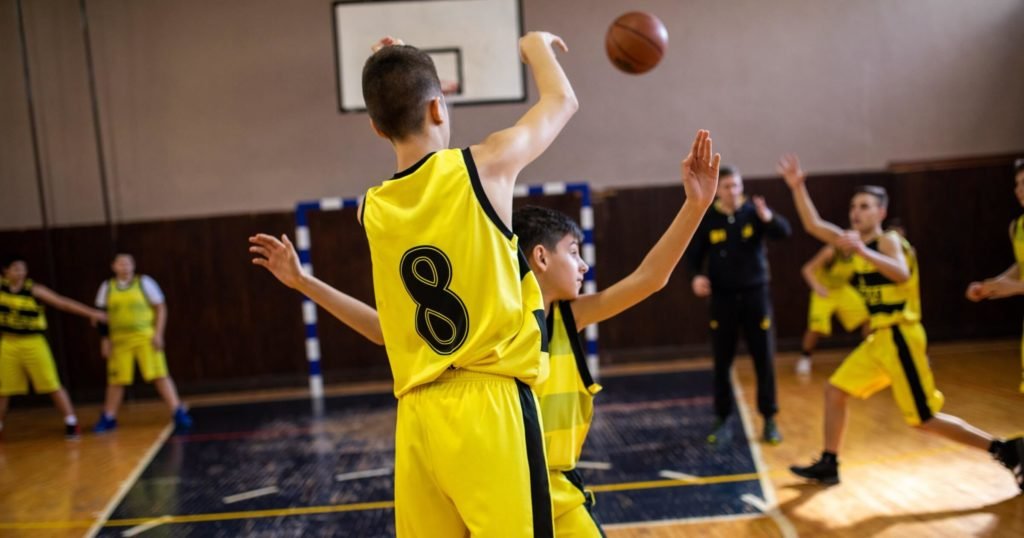One cannot have a great transition break without securing a rebound and having a nice outlet pass. It’s a key component to executing the offensive break.
An outlet pass is performed when a player grabs the defensive rebound and sends a pass to start a fastbreak. These passes are thrown at whole court with the intent to score a quick basket with little to no contest.
Why is it Called an Outlet Pass?
An outlet pass is made when a team’s player rebounds the basketball and passes to a teammate who possesses the ability to score. The main idea behind making this kind of pass is so that the team can make a quick break.
An outlet also enhances the team’s playing pace as they transition from defensive play into offense. This act of opening up an offensive opportunity when the rest of the team is predominantly occupied with defending the ball is why it is referred to as an outlet pass.
Tips to Successfully do an Outlet Pass

Practice rebounding
To be great at giving outlet passes, one has to possess several key attributes.
For starters, one must be excellent in claiming rebounds when in defense. This is because rebounding the ball is a key moment before channeling out an outlet pass.
One needs to be good and very assertive while in the air. This will increase their chances of winning the ball for the rebound when the basketball hits the board.
Improve your passing
Passing is another core attribute required of a player responsible for dishing out outlet passes.
A player with great passing skills benefits the team tremendously as their skill reduces the number of times their team can potentially lose the ball. Players ought to be amazing with directions so that they minimize the number of mispasses.
Basketballers should avoid making their passes very predictable to avoid the chances of the pass being intercepted.
Minimize interceptions
Another technique that can assist in improving a player’s passing is encouraging them to make easy passes. This is because the more complex a pass is, the higher the chances of intercepting it.
Players can also train on how to scrimmage without dribbles. This will help in teaching them about spacing, as well as making more effective passes.
Be aware of everyone’s positions
Individuals responsible for distributing outlet passes should also possess a unique technical ability to spot the best-placed teammate to make a successful run up the court. This technical ability is referred to as vision.
Players with extraordinary vision can weave unique passes between a sea of bodies, reaching the intended and best-placed teammate. Often, these passes catch people, opponents, and teammates alike off-guard since they were least expecting it.
Different Types of Passes in Basketball
In basketball, the first type of pass is the air pass. As the term suggests, the ball goes to another player without touching the floor.
The second type of pass is a bounce pass, wherein the ball can bounce in the direction of another player who will receive it.
There are variations to the two passes:
| Basic Variations | Advanced Variations |
| Bounce Pass: aimed at the floor and to the waist height of the receiver | Baseball Pass: one-hand pass for long passes |
| Chest Pass: produces a backspinning ball to the chest of the receiver | Behind-the-Back Pass: wraps the ball around your back to avoid the defender |
| Overhead Pass: ball above forehead going to chin level of the receiver | Dribble Pass: one hand is off the dribble |
| Wrap Around Pass: uses only one hand | Pick-and-Roll Pass: useful when defenders double-team |
Best Passers in NBA History
Passing is a key attribute in the NBA since basketball is a team sport. A player with great passing skills benefits the team tremendously as their skill reduces the number of times their team can potentially lose the ball.
A bad pass from a player on one team intending to pass it to a teammate might result in the pass being intercepted by a member of the opposing side, which is also considered a turnover.
To avoid this, players are usually advised to exert extra force on their passes to ensure they reach their intended destination. Apart from this, players also need to be good with directions to minimize the number of miss-passes.
An assist in basketball is a pass from a teammate that directly leads to a score. Therefore, the more assists a player has, the more their team scores.
Since passing is a crucial part of the game, great passers are usually highly coveted and stand higher chances of becoming great NBA stars. Many great players have played basketball over the years, and many even went on to be inducted into the NBA Hall of Fame due to their various contributions, such as assists, rebounds, and so on.
Below is a list of the greatest passers in the history of the NBA.
| Player | Average Assist Per Game |
| Steve Nash | 8.5 |
| Magic Johnson | 11.2 |
| Larry Bird | 6.3 |
| Isiah Thomas | 9.3 |
| LeBron James | 7.4 |
| Michael Jordan | 5.3 |
Conclusion
An outlet pass is made when a team’s player on defensive duties rebounds the basketball to a teammate who possesses the ability to access more advanced positions easily and launch an offensive play. This act of opening up an offensive opportunity when the rest of the team is predominantly occupied with defending the ball is why it is referred to as an outlet pass.
The main idea behind making this kind of pass is to increase the pace of transition from defensive to offensive play so that the team can make a quick break and try to score.
Read these next:
